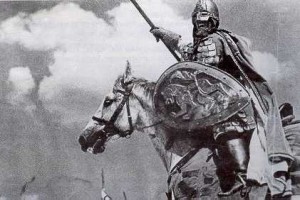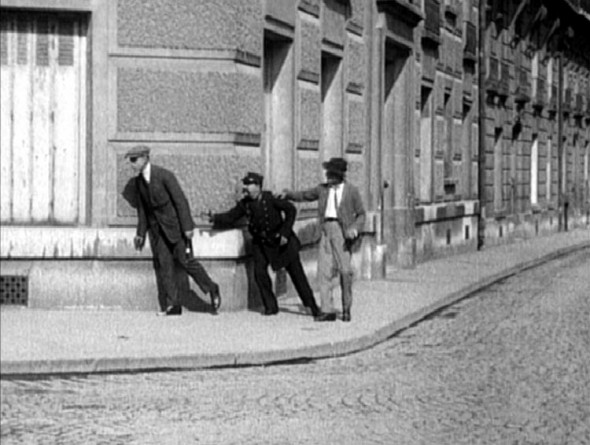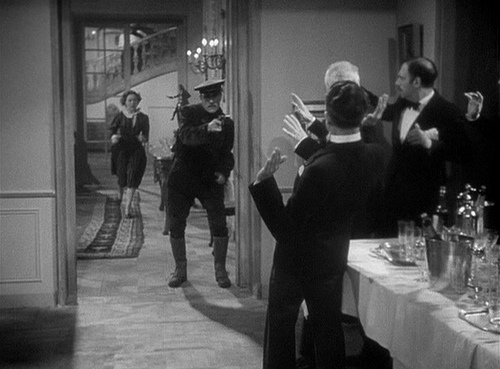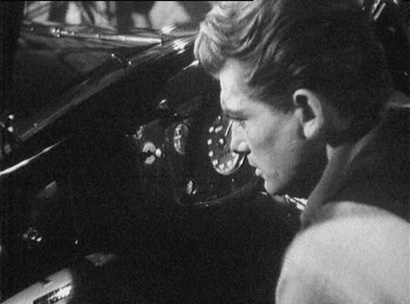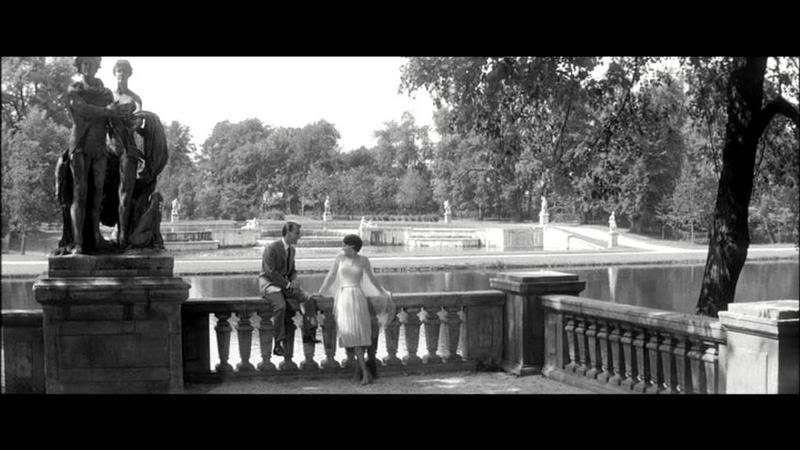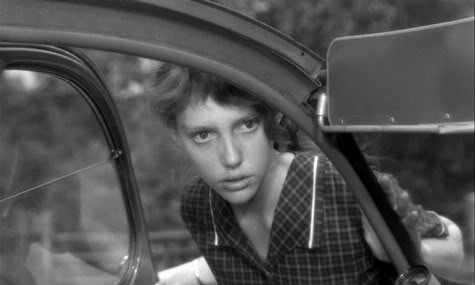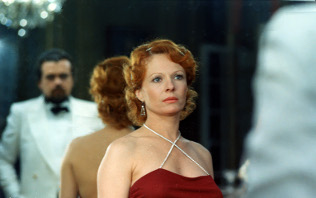The article from the October 1982 issue of American Film is so quaintly and absurdly dated now that I can’t resist reproducing it. -– J.R.
The prospect of choosing ten French movies that I’d like to own on videocassette is pretty hard to resist –- even for someone who still doesn’t own a cassette recorder. And when I consider the losses that any great film is bound to suffer on a home screen, I find myself consoled by the opinion of Jean-Luc Godard, expressed, twenty years ago:
”Even with films like Lola Montès and Alexander Nevsky, something comes through on television, despite the distortion, the rounded screen, the lack of definition, the absence of color. . .With Lola Montès, what you lost visually you often gained by having your attention focused on the dialogue. If only part of the film survives. It will be enough to bring it across.”
Admittedly, Godard was speaking here about old-fashioned network transmission — and French television at that, which offered a higher visual definition, and no time-slotting cuts or commercial breaks. Still, the overall thrust of his point, is true. Reproducing a classic film on cassette may do something drastic to its original purpose and format, but something essential remains.
Video technology has rendered the myth of Robinson Crusoe obsolete. To rediscover or reinvent culture today, none of us has to be shipwrecked; we can create our own proverbial desert islands in the privacy of our homes. In the list that follows, I’ve omitted a few classic titles available on tape -– like Le jour se lève, Shoot the Piano Player, and Jules and Jim -– because they’re not prime desert island material.
Conversely, at the end I’ve listed three movie tapes that currently aren’t available In the United States, but should be.
1. Paris qui dort (The Crazy Ray, 1923)
An obvious plus in having René Clair’s firs feature on cassette is that one can stop it and start it up again at any point. This is just what the investor Dr. Crase does to Paris in this silent romantic comedy — freeze time, with his ingenious “crazy ray”. The young hero, a night watchman on the Eiffel Tower, descends one day to find the entire city in suspended animation. Eventually he meets some similarly immune visitors from Marseilles who are also bemused and enchanted by this miracle, which transforms Paris into an enormous playground for those who are still mobile – a city ripe ,tor the taking. With your own copy of The Crazy Ray you can literally become your own Dr. Crase –- or Dr. Clair.
2. Un chien andalou (An Andalusian Dog, 1928)
Sad to say, this is the only French film by the great Luis Buñuel presently on cassette. Luckily, the first and shortest of his films (only seventeen minutes long) is also his most outrageous and corrosive (with only L’age d’or, his first feature, a close competitor). And, arguably, it’s still his best. “Once upon a time…” this silent Surrealist protest begins jauntily, in mockery of a narrative form that it seeks to obliterate, and before long its famous and still-shocking close-up of an eyeball sliced by a razor catapults the fractured plot into a string of deliriously unforgettable events and images.
3. La règle du jeu (The Rules of the Game, 1939)
Many critics have offered a strong case for this as the greatest French film by the greatest French director, Jean Renoir — even though, like many great films, it was a commercial disaster when it first came out. “People go to the cinema in the hope of forgetting, their everyday problems,” Renoir remarked thirty-five years later, “and it was precisely their own worries that I plunged them into. . . . I depicted pleasant, sympathetic characters, but showed them in a society in the process of disintegration, so that they were defeated at the outset.” Perhaps the French film with the greatest number of major characters (at least until Playtime), democratically subdivided into all possible classes, it converts their intricate interminglings into a farcical, tragicomic ballet of tenderness and passion. It’s funny, sad, and glamorous, and boasts one of the richest demonstrations of mise en scène. Considering the brilliance of the dialogue, it’s a pleasure to report that the cassette version is subtitled –- as are all the films listed below.
4. Orphée (Orpheus, 1949)
Jean Cocteau is one of the best-represented French filmmakers insofar as the three films generally thought to be his finest -– The Blood of a Poet, Beauty and the Beast, and Orphée -– are all accessible for home use. This is good news, for if the personal poetics of Cocteau can reach a broad public in this manner, the best of such disciples as Georges Franju (Les yeux sans visage) and Jacques Demy (Lola) may not be far behind. My own preference for Orphée partly stems from the totalizing power of its private cosmology, which virtually re-creates the vocation of poetry and the resonance of myth in the banality of Cocteau’s social milieu. Like Godard’s Alphaville, is a science fiction myth set in the natural locations of contemporary Paris and hence, at the very least, a very witty (if campy) social satire. The title poet (jean Marais) is led away by elegant Death (Maria Casares) attended by sleek black-leather motorcyclists, mirrors become portals of entry and car rides blast cryptic messages from the outer reaches.
5. Les vacances de Monsieur Hulot (Mr. Hulot’s Holiday, 1953)
It’s a real pity that you can’t get Jacques Tati’s Playtime or Trafic on tape, and an outright crime that his Parade (1973) hasn’t yet been seen in the United States in any form -– all the more inexplicable because that charming and original circus film was originally shot on video, and seems a natural for prime-time American television. But we can still rejoice in the fact that the two most popular Mr. Hulot efforts, Mr. Hulot’s Holiday and Mon oncle (1958), are on cassette. Like all of Tati’s major comedies, they need no translation, for their language of gesture and custom is universal. The likable silliness of seaside vacationers in the former is set down with a sense of space and volume, sound and silence, tempo and rhythm that is unique in film: elegant boxlike structures of off-center action and reaction, that make Tati’s Hulot something of a philosopher as well as a comic bumbler whenever he happens upon a landscape.
6. A bout de souffle (Breathless, I960)
Of all the New Wave tributes to American movies, Jean-Luc Godard’s first feature is undoubtedly the flakiest, funniest, smartest, and most enduring. Jean-Paul Belmondo, in his first big role, is the definitive Bogey-style crook on the run, and Jean Seberg was never more winningly enigmatic than as his pretty, heartless American girl friend. This is the movie that introduced jump cuts and cinematic in-jokes to the world at large — both of which keep, bubbling long thanks to Martial Solal’s superb jazz score and an unpredictable pace that lurches forward when you’re least expecting it. Paris was seldom lovelier.
7. L’Année dernière à Marienbad (Last Year at Marienbad, l96l)
It’s nice to know that Alain Resnais’ first two features –- Hiroshima, mon amour and this one – are on cassette. It’s not so nice to realize that the latter, the only Cinemascope film on my list, can only be had in a television-scanned version. This process trims both sides of the wide-screen frame and re-edits some shots in order to center certain details –- a maddening procedure roughly equivalent to either omitting or italicizing every fifth word in a novel. (For my money, shrinking the image so that a black border is visible above and below, is infinitely preferable – and the solution most often adopted on French television.) Yet considering all the perverse yet seductively teasing games that Resnais and Alain Robbe-Grillet play with our narrative expectations and movie reflexes, one hopes that this will prove to be only a minor distraction. The intense, “musical” pleasures of Resnais’ beautifully nuanced way with camera movements and cuts make this movie bear repeating as often as a favorite symphony.
8. Au Hasard, Balthazar (Balthazar, 1966)
As the most erotically powerful of all French filmmakers, Robert Bresson belongs on the shelf next to Hitchcock and Carl Dreyer. Alas, I know of none of his films that has yet made it onto cassette, and viewers who like their French art sexy will have to settle for dubbed versions of Roger Vadim’s And God Created Woman (1956) and Circle of Love (1964), which focus on the bodies and antibourgeois frolics of Brigitte Bardot and Jane Fonda, respectively. Bresson’s art and erotics are made of sterner stuff; in the case of Balthazar, it is a vision that extends to include the world’s brute suffering and human cruelty, as filtered through a fable on the life of a donkey. Told in quick, bold flashes of image and sound, Bresson’s harsh story conveys such a material grasp of the real world that it makes spirituality and carnality seem almost indistinguishable.
9. Céline et Julie vont en bateau (Celine and Julie Go Boating, 1974)
Unlike Godard and Truffaut, New Wave directors Claude Chabrol, Jacques Rivette, and Eric Rohmer aren’t yet on tape. If Rivette’s delightful 192-minute feminist comedy in color seems a prime candidate, this is largely because audiences have generally shown themselves to be well ahead of most critics and distributors when it comes to appreciating the giddy challenges of a mind-blowing spree of this kind. Given half a chance, this, movie could provide home viewers with as many youthful kicks as Diva, plus a lot more to think about afterward. The goofy title heroines, a magician (Juliet Berto) and a librarian (Dominique Labourier), make episodic visits to a haunted house,, where phantom ladies Bulle Ogier and Marie-France Pisier repeatedly plot one another’s undoing. Rarely has the spirit of Alice in Wonderland – and Montmartre in the summertime — been so well exploited.
I0. India Song (1975)
If Rivette’s free-form farce occasionally offers us more than we want — which may make us want to consume it in installments (an easy matter with a cassette) — Marguerite Duras’s no less innovative color masterpiece may disconcert us at first by providing us with less than we expect. A haunting tango and a hypnotic litany of offscreen voices delivering Duras’s pithy, rhythmic dialogue accompany languid, handsome, semi-motionless shots of Delphine Seyrig, Michel Lonsdale, and others inside swank interiors with mirrors that suggest peering through dark brandy. But as with popcorn, one may find that the more one gets, the more one wants; and after a while, Duras’s seemingly minimal strategies take on a maximal impact. Familiarity breeds entrancement and infatuation, and what better way to nurture this than to have your own copy?
Published on 11 Apr 2013 in Notes, by jrosenbaum


